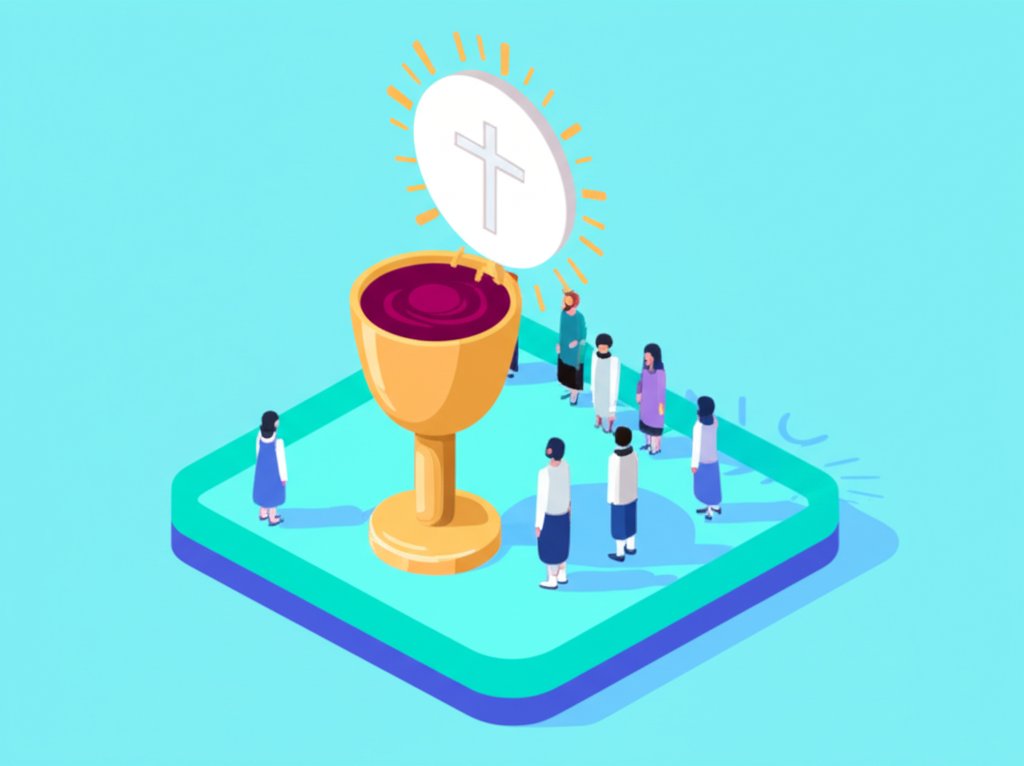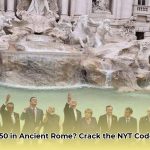Embark on an illuminating journey through millennia to understand the Eucharist’s history—a sacred rite that stands as the bedrock of Christian tradition. More than a mere ritual, the Eucharist encapsulates a vibrant narrative of faith, evolving theological understanding, and enduring spiritual practice. This article delves deep into the Eucharist’s evolution, from its foundational moments at the Last Supper to its multifaceted expressions across diverse Christian denominations today, meticulously unraveling the profound historical significance of the Eucharist. Prepare to explore how this central sacrament has shaped spiritual lives, influenced societal norms, and fueled theological discourse throughout the ages, aiming to provide the most comprehensive and authoritative resource on this vital topic.
The Genesis of the Eucharist: Biblical Foundations and Early Practice

To truly grasp the historical significance of the Eucharist, one must first return to its origins, firmly rooted in the New Testament accounts and the nascent Christian community. This period laid the immutable groundwork for what would become the central act of Christian worship.
The Last Supper and Its Proclamation
The quintessential moment in Eucharist history is undoubtedly the Last Supper, an event recorded in the Synoptic Gospels (Matthew 26:26-28, Mark 14:22-24, Luke 22:19-20) and further elaborated by the Apostle Paul (1 Corinthians 11:23-26). Here, Jesus shared bread and wine with his disciples, proclaiming them to be his body and blood—a new covenant established through his impending sacrifice. This meal was not merely a farewell gathering but an institution, with Jesus instructing his followers, “Do this in remembrance of me.” This command immediately imbued the act with a profound historical significance of the Eucharist, transforming a simple meal into a perpetual memorial of Christ’s paschal mystery. It marked the definitive beginning point of the Eucharist, establishing it as a core practice.
Early Apostolic Practice and Community Meals
Following Christ’s ascension, the early Christian communities, as depicted in the Acts of the Apostles, continued “breaking bread” together (Acts 2:42, 46). These gatherings, often held in homes, combined fellowship, teaching, prayer, and the communal meal, which quickly became identified as the Lord’s Supper or the Eucharist. This early practice, integral to the nascent Christian tradition, served as a powerful expression of unity, remembrance, and anticipation of Christ’s return. The simple yet profound act reinforced their identity as followers of Jesus and their shared participation in his life, death, and resurrection. This period showcases the organic Eucharist evolution from a direct command to a lived communal reality.
Theological Roots in the Old Testament
The Eucharist’s historical significance is further enriched by its deep theological connections to the Old Testament. Scholars often highlight parallels with the Passover meal, commemorating Israel’s liberation from slavery in Egypt, and the manna provided in the wilderness, symbolizing divine sustenance. Just as the Passover lamb’s blood sealed a covenant and manna provided physical nourishment, the Eucharist symbolizes the new covenant sealed by Christ’s blood and offers spiritual sustenance. This continuity underscores the idea that the Eucharist is not an isolated Christian invention but the culmination of salvation history, a new and perfect covenant foreshadowed for centuries within the broader Christian tradition.
Early Church Practices: Shaping the First Millennium of the Eucharist
As the Christian faith spread, the practices surrounding the Eucharist began to formalize, adapting to growing communities and emerging theological understandings. This era of Eucharist history is critical for understanding its enduring structure and meaning.
From House Churches to Formal Liturgies
Initially celebrated in homes, the Eucharist gradually moved into more structured settings as the Church grew. By the second and third centuries, detailed descriptions of Eucharistic liturgies began to appear. These services typically involved readings from scripture, a homily, communal prayers, the collection of offerings, and then the preparation and distribution of the consecrated bread and wine. This regularization was a significant step in the Eucharist’s evolution, moving from spontaneous gatherings to formal communal worship. The structure provided consistency and reinforced the reverence for the sacrament, solidifying its place at the heart of Christian tradition.
The Didache and the Evolution of Ritual
One of the most invaluable insights into early Eucharistic practice comes from the Didache, an early Christian treatise from the late 1st or early 2nd century. It offers specific instructions on how to celebrate the Eucharist, including prayers of thanksgiving and exhortations for participants to be in a state of grace. The Didache’s guidelines reveal a developing liturgical form, emphasizing the communal aspect, the thanksgiving (from which “Eucharist” derives, meaning “thanksgiving”), and the spiritual preparation required. This document provides concrete evidence of the early Eucharist evolution, demonstrating how rituals were being established to ensure proper observance and to maintain the sacred nature of the “Lord’s Supper.”
Persecution, Unity, and the Eucharist’s Centrality
During periods of Roman persecution, the Eucharist took on an even deeper historical significance of the Eucharist. Meeting in secret, often at great personal risk, early Christians found profound unity and strength in sharing this sacred meal. The Eucharist became a defiant act of faith, a symbol of their unwavering commitment to Christ and to one another. It was a potent reminder that despite external pressures, they were one body in Christ. This shared experience forged an unbreakable bond, making the Eucharist not just a theological concept but a lived reality that sustained the early Church through its most challenging trials, further cementing its role as a core element of Christian tradition.
Medieval Transformations: Doctrine, Devotion, and Disputation

The Middle Ages witnessed a profound development in the Eucharist’s history, particularly within Western Christianity, marked by intense theological debates, the formalization of doctrine, and the rise of popular devotion. This era dramatically shaped the understanding and practice of the Eucharist for centuries to come.
The Rise of Transubstantiation and its Impact
Perhaps the most significant development in Eucharist evolution during the medieval period was the formal articulation of the doctrine of transubstantiation. This doctrine, defined by the Fourth Lateran Council in 1215, asserted that during the Mass, by the power of the Holy Spirit invoked through the priest’s consecration, the entire substance of the bread and wine is changed into the entire substance of the Body and Blood of Christ, while the “accidents” (outward appearances) remain. This belief profoundly amplified the historical significance of the Eucharist, transforming it into a moment of literal divine presence. It led to increased reverence, the elevation of the host, and the development of practices like Eucharistic adoration, profoundly impacting Catholic Christian tradition.
Eucharistic Miracles and Popular Piety
Alongside formal doctrine, the medieval period saw a surge in popular devotion to the Eucharist, often fueled by accounts of “Eucharistic miracles.” Stories of the host bleeding, levitating, or visibly transforming into flesh were widespread, serving to reinforce the belief in the real presence of Christ for the common faithful. These narratives, whether factual or legendary, deeply influenced popular piety and contributed to the sense of awe and wonder surrounding the sacrament. They underscore how deeply the Eucharist permeated medieval culture and spiritual life, moving beyond purely theological circles to shape the everyday faith of millions within Christian tradition.
Sacramental Theology and Scholastic Debates
The intellectual giants of scholasticism, such as Thomas Aquinas, dedicated extensive treatises to the Eucharist, meticulously exploring its nature, effects, and the mechanism of Christ’s presence. Their rigorous philosophical and theological inquiries solidified the understanding of the Eucharist as a true sacrament, effective ex opere operato (by the work performed). These debates, while complex, were crucial for the Eucharist’s evolution, providing a robust theological framework that would define the sacrament for the Roman Catholic Church and influence discussions even among those who would later diverge. The depth of these discussions further illustrates the immense historical significance of the Eucharist within Western thought.
The Reformation and Beyond: Divergence and Renewal in Eucharistic Beliefs
The 16th-century Protestant Reformation brought about a seismic shift in Eucharist history, leading to profound divergences in theological understanding and practice that continue to characterize various Christian traditions today. This period represents a critical juncture in the Eucharist’s evolution.
Martin Luther and Consubstantiation
Martin Luther, a central figure of the Reformation, challenged the Catholic doctrine of transubstantiation. While firmly believing in the real presence of Christ in the Eucharist, he proposed a different explanation, often termed “consubstantiation” (though Luther himself did not use this term and preferred “sacramental union”). For Lutherans, Christ is truly present “in, with, and under” the elements of bread and wine, but the substance of the bread and wine remains. This view maintained a high historical significance of the Eucharist for Lutherans, emphasizing it as a true means of grace, yet it represented a significant departure from the established Catholic doctrine and fundamentally altered the trajectory of Eucharist evolution.
Zwingli, Calvin, and Symbolic Interpretations
Other Reformers offered even more radical reinterpretations. Huldrych Zwingli, for instance, viewed the Eucharist primarily as a symbolic memorial, a sign of Christ’s sacrifice and a pledge of the believer’s commitment. For Zwingli, Christ’s body was in heaven, and therefore could not be physically present in the elements. John Calvin, while rejecting transubstantiation and Zwingli’s purely symbolic view, taught a spiritual presence of Christ, where believers truly partake of Christ’s body and blood through faith, elevated by the Holy Spirit. These diverse perspectives highlight the intense debates and the fragmentation of what was once a unified Christian tradition regarding the Eucharist, demonstrating the complex nature of its evolution.
The Council of Trent and Catholic Responses
The Roman Catholic Church responded to the Protestant challenges at the Council of Trent (1545-1563). Here, the doctrine of transubstantiation was strongly reaffirmed and clarified, condemning the Protestant alternatives. Trent also emphasized the sacrificial nature of the Mass, reiterating the belief that the Eucharist is a re-presentation of Christ’s sacrifice on the cross. This council solidified Catholic Eucharistic theology for centuries, profoundly influencing Catholic Christian tradition and drawing clearer lines of distinction between Catholic and Protestant understandings of the Eucharist’s historical significance.
Modern Ecumenical Dialogues and Shared Understanding
In the modern era, particularly in the wake of the 20th century, there has been a significant movement towards ecumenical dialogue among various Christian traditions. While fundamental differences regarding the Eucharist persist, many denominations have found common ground in recognizing its central importance as a memorial of Christ’s sacrifice and a sign of unity. Documents like the Lima Statement (“Baptism, Eucharist and Ministry”) from the World Council of Churches reflect a profound effort to bridge historical divides and seek a deeper, shared understanding of the historical significance of the Eucharist, even if full intercommunion remains a challenge. This ongoing dialogue represents a new chapter in the Eucharist’s evolution, marked by a spirit of reconciliation and mutual respect.
The Enduring Historical Significance of the Eucharist in Christian Tradition
Throughout its dynamic Eucharist history, this sacred meal has maintained an unparalleled position within Christian tradition, influencing every facet of Christian life and worship. Its power stretches far beyond theological debates, touching the very experience of faith.
A Symbol of Unity and Division
Paradoxically, the Eucharist, instituted as a sign of unity, has also been a primary source of division within Christianity. Disagreements over the nature of Christ’s presence, the meaning of the sacrifice, and who can participate have led to schisms and denominations. Yet, even in its divisiveness, the Eucharist underscores its profound historical significance of the Eucharist: it is so central to Christian identity that differences here are seen as fundamental. Conversely, ecumenical efforts often focus on the Eucharist as a potential path back to unity, recognizing its inherent power to gather and bind believers together.
The Eucharist’s Role in Christian Tradition and Identity
Beyond its theological intricacies, the Eucharist remains a cornerstone of Christian tradition for billions worldwide. It is a tangible link to Christ’s original command, a weekly or daily reminder of his sacrifice and resurrection. It shapes the liturgical calendar, inspires art and music, and serves as a powerful means of spiritual nourishment and grace. The act of sharing bread and wine connects believers across time and space, providing a deep sense of belonging and continuity within the global Christian family. This enduring practice confirms the sacrament’s pivotal role in shaping and defining Christian identity.
Future Perspectives on Eucharist Evolution
As Christianity navigates a rapidly changing world, the Eucharist’s evolution continues. Questions around accessibility (e.g., online communion), intercommunion between denominations, and adaptation to new cultural contexts are ongoing. While the core tenets of the Eucharist’s historical significance remain immutable for most, interpretations and practices will undoubtedly continue to adapt and develop. The dialogue between tradition and modernity ensures that the Eucharist remains a living, dynamic sacrament, continually challenging believers to deepen their understanding and experience of Christ’s presence.
Conclusion: A Timeless Sacrament
The Eucharist’s history is a rich tapestry woven with threads of divine command, apostolic practice, profound theological development, and deeply personal piety. From the intimate setting of the Last Supper to its global celebration across countless Christian traditions, its evolution is a testament to its enduring power and central position in Christian faith.
Understanding the historical significance of the Eucharist offers us more than just a chronological account; it provides a window into the heart of Christian belief, revealing how believers throughout the ages have sought to encounter the divine, remember Christ’s sacrifice, and express their unity. As we reflect on this sacred meal, we are invited to appreciate its multifaceted journey and its timeless call to remembrance, thanksgiving, and communion with Christ and one another. The Eucharist is not merely a relic of the past; it is a living sacrament, continually inviting us into the profound mystery of God’s grace.
FAQ: Understanding the Eucharist’s Profound Significance
What is the Eucharist?
The Eucharist (also known as Holy Communion or the Lord’s Supper) is a central sacrament or rite in most Christian traditions. It involves the consecration and consumption of bread and wine, which are understood to represent or become the Body and Blood of Jesus Christ, in remembrance of his Last Supper and sacrifice on the cross.
When did the practice of the Eucharist begin?
The practice of the Eucharist began with Jesus Christ himself at the Last Supper, as recorded in the Gospels and by the Apostle Paul, shortly before his crucifixion. Early Christians rapidly adopted and continued this practice, even before the complete formation of the New Testament canon.
How has the Eucharist evolved throughout Eucharist history?
The Eucharist’s evolution has been significant. Initially celebrated in simple house gatherings, it developed formal liturgies in the early Church. During the Middle Ages, the doctrine of transubstantiation was formalized, emphasizing the real presence of Christ. The Protestant Reformation brought diverse interpretations, from Luther’s sacramental union to Zwingli’s symbolic view. Modern ecumenical dialogues seek common ground, but practices and beliefs still vary widely among denominations.
What is the historical significance of the Eucharist?
The historical significance of the Eucharist is immense. It has served as the central act of Christian worship, a profound symbol of unity (and at times, division) among believers, a tangible link to Jesus’s sacrifice, and a primary means of grace and spiritual nourishment. It has shaped theological doctrine, liturgical practices, and the everyday faith of Christians for two millennia.
What is “Transubstantiation” and how does it relate to the Eucharist?
Transubstantiation is the Roman Catholic doctrine that states that during the Mass, the entire substance of the bread and wine is miraculously changed into the entire substance of the Body and Blood of Christ, while the outward appearances (accidents) remain. It became the official teaching of the Catholic Church at the Fourth Lateran Council in 1215 and is central to their understanding of the Eucharist.
How do different Christian traditions view the presence of Christ in the Eucharist?
Views vary widely:
Why is the Eucharist often called “Holy Communion” or “The Lord’s Supper”?
“Holy Communion” emphasizes the sacred act of fellowship with Christ and with other believers. “The Lord’s Supper” directly references the Last Supper Jesus shared with his disciples, underscoring its historical origin and command from Jesus himself. These names highlight different facets of the same sacred rite in Christian tradition.
“@context”: “https://schema.org”,
“@type”: “FAQPage”,
“mainEntity”: [
“@type”: “Question”,
“name”: “What is the Eucharist?”,
“acceptedAnswer”: {
“@type”: “Answer”,
“text”: “The Eucharist (also known as Holy Communion or the Lord’s Supper) is a central sacrament or rite in most Christian traditions. It involves the consecration and consumption of bread and wine, which are understood to represent or become the Body and Blood of Jesus Christ, in remembrance of his Last Supper and sacrifice on the cross.”
“@type”: “Question”,
“name”: “When did the practice of the Eucharist begin?”,
“acceptedAnswer”: {
“@type”: “Answer”,
“text”: “The practice of the Eucharist began with Jesus Christ himself at the Last Supper, as recorded in the Gospels and by the Apostle Paul, shortly before his crucifixion. Early Christians rapidly adopted and continued this practice, even before the complete formation of the New Testament canon.”
“@type”: “Question”,
“name”: “How has the Eucharist evolved throughout Eucharist history?”,
“acceptedAnswer”: {
“@type”: “Answer”,
“text”: “The Eucharist’s evolution has been significant. Initially celebrated in simple house gatherings, it developed formal liturgies in the early Church. During the Middle Ages, the doctrine of transubstantiation was formalized, emphasizing the real presence of Christ. The Protestant Reformation brought diverse interpretations, from Luther’s sacramental union to Zwingli’s symbolic view. Modern ecumenical dialogues seek common ground, but practices and beliefs still vary widely among denominations.”
“@type”: “Question”,
“name”: “What is the historical significance of the Eucharist?”,
“acceptedAnswer”: {
“@type”: “Answer”,
“text”: “The historical significance of the Eucharist is immense. It has served as the central act of Christian worship, a profound symbol of unity (and at times, division) among believers, a tangible link to Jesus’s sacrifice, and a primary means of grace and spiritual nourishment. It has shaped theological doctrine, liturgical practices, and the everyday faith of Christians for two millennia.”
“@type”: “Question”,
“name”: “What is \”Transubstantiation\” and how does it relate to the Eucharist?”,
“acceptedAnswer”: {
“@type”: “Answer”,
“text”: “Transubstantiation is the Roman Catholic doctrine that states that during the Mass, the entire substance of the bread and wine is miraculously changed into the entire substance of the Body and Blood of Christ, while the outward appearances (accidents) remain. It became the official teaching of the Catholic Church at the Fourth Lateran Council in 1215 and is central to their understanding of the Eucharist.”
“@type”: “Question”,
“name”: “How do different Christian traditions view the presence of Christ in the Eucharist?”,
“acceptedAnswer”: {
“@type”: “Answer”,
“text”: “Views vary widely:\n Roman Catholics and Orthodox Christians believe in the Real Presence through transubstantiation (Catholic) or similar mystical change (Orthodox).\n Lutherans believe in a sacramental union (often termed consubstantiation), where Christ is truly present \”in, with, and under\” the elements without changing their substance.\n Reformed (Calvinist) traditions believe in a spiritual presence, where Christ’s body and blood are not physically present in the elements but are truly received by the believer through faith by the power of the Holy Spirit.\n Some Protestant denominations (e.g., Baptists, Zwinglian traditions) view the Eucharist primarily as a symbolic memorial of Christ’s sacrifice.”
“@type”: “Question”,
“name”: “Why is the Eucharist often called \”Holy Communion\” or \”The Lord’s Supper\”?”,
“acceptedAnswer”: {
“@type”: “Answer”,
“text”: “Holy Communion\” emphasizes the sacred act of fellowship with Christ and with other believers. \”The Lord’s Supper\” directly references the Last Supper Jesus shared with his disciples, underscoring its historical origin and command from Jesus himself. These names highlight different facets of the same sacred rite in Christian tradition.”










